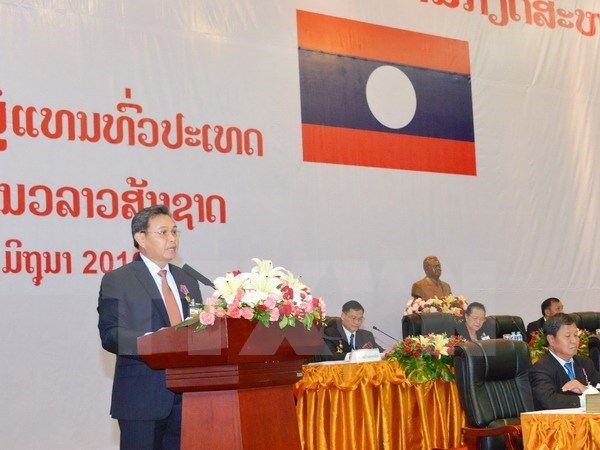The Lao Front for National Construction (LFNC) has been promoting it role in society during celebrations in the lead up to its 66th anniversary on Saturday, August 13.
Its functions include assisting the people to translate into reality the resolutions of the 10th Congress of the Lao People’s Revolutionary Party and the 10th Congress of the LFNC.
The President of the Lao Front for National Construction, Dr Xaysomphone Phomvihane addressed a press conference in Vientiane on Tuesday to promote the LFNC’s responsibilities and anniversary.
This year’s 66th anniversary activities have included a ceremonial meeting of former front leaders and the LFNC President’s Cup sporting competition taking in football, badminton, petanque and cycling, along with cultural performances and a community walk to commemorate the occasion.
Dr Xaysomphone explained the LFNC was established on August 13, 1950, and was initially known as the Lao Front of Liberty and then Lao Front of Patriots. After Laos achieved liberation, the organisation was given the name it holds today.
He also pointed out its important role in boosting solidarity and mobilising all Lao people to support the national liberation movement, national defence and development.
The LFNC is the face of Lao national unity, social-political relations, and voluntary unionism. It was established to represent the political, social-political, and personal wishes of all Lao people, regardless of ethnicity, religion, gender, or age.
The LFNC has evolved over three stages: the Lao Front of Liberty, Lao Front of Patriots and now as the Lao Front for National Construction.
The LFNC contributed greatly to mobilising people in building the revolutionary stronghold and expanding the revolutionary movement in both the political arena and the armed forces.
It contributed to the fighting that accompanied the victorious liberation battle of Dien Bien Phu in Vietnam in 1954, which led to the Geneva Agreement 1954 on Indochina.
The LFNC also contributed significantly to the establishment of the Lao People’s Party (today the Lao People’s Revolutionary Party) on March 22, 1955.
The most critical period was from 1957 to 1960 when the second battalion of the Lao Patriotic Front (today’s LFNC) was blockaded by the enemy at the Plain of Jars, and the Front’s leaders were arrested. However, the battalion and leaders succeeded in escaping from the blockade and prison.
After the country achieved liberation, the Lao Patriotic Front was the flag bearer for unifying the people for national defence and development.
Source: Vientiane Times



